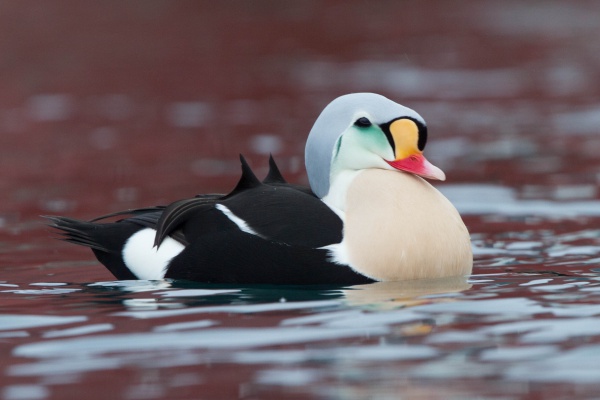Facts About King eider
The King Eider is a striking sea duck, renowned for its vibrant appearance and Arctic lifestyle. Inhabiting coastal regions of Europe, North America, and Asia, these birds migrate to the Arctic tundra to breed in June and July. There, they lay approximately four to seven eggs in nests lined with grass and soft down.
Belonging to the genus Somateria, the King Eider is closely related to other eiders but distinguished as a unique species. The name "Somateria" underscores the bird's dense, soft down, while "spectabilis" references the showy plumage of the adult males. Male King Eiders are larger and more colorful than females, featuring a multicolored head and a distinctive knob above the bill.
These large sea ducks exhibit slight size variations, with males measuring between 50 and 70 cm in length, while females are somewhat smaller. The species is sexually dimorphic—males display vivid colors, whereas females feature a warmer brown hue. Juvenile King Eiders are greyish-brown and take about three years to develop their full adult plumage. They are distributed throughout the Arctic, breeding in tundra habitats and wintering in Arctic and subarctic marine areas.
King Eiders adjust their foraging habits with the seasons. While at sea, they feed on benthic invertebrates, and during the breeding season, they dabble for small invertebrates in freshwater. Females are responsible for building the nest and incubating the eggs for 22-23 days. Males contribute a distinctive cooing song, while females employ a variety of vocalizations.
Currently, the King Eider is not considered threatened and is listed as a species of least concern by the IUCN. They hold traditional significance for indigenous communities, providing fresh meat during their spring migration. Hunted in significant numbers along their routes, these remarkable sea ducks continue to thrive in their Arctic habitat, showcasing unique characteristics and behaviors.
